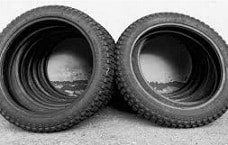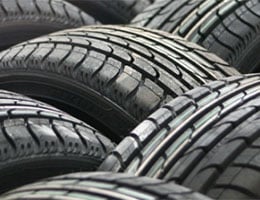 The Greek word pneumatikós came to Latin as pneumatĭcus , which in turn led to tire in our language . As an adjective , pneumatic refers to something whose operation is possible thanks to air or some other type of gas .
The Greek word pneumatikós came to Latin as pneumatĭcus , which in turn led to tire in our language . As an adjective , pneumatic refers to something whose operation is possible thanks to air or some other type of gas .
A pneumatic machine , in this framework, is a device used to extract a gas from a closed space. The pump that extracts and/or compresses the air, meanwhile, is called a pneumatic pump .
A pneumatic hammer , on the other hand, is a percussion tool that, using compressed air, is used to make holes in the pavement, asphalt or other type of material. We can also find references to a pneumatic hood , which is a chamber isolated from its environment in which it is possible to regulate the air pressure.
Beyond these notions, the most frequent use of tire is as a noun . The rubber element that, in a vehicle, is placed on the rim of a wheel is called a tire. The tire may have an air chamber .
It is important to mention that the wheel is a circular mechanical object that rotates around an axis. The wheel has a metal piece in its center called the rim, on which the tire is mounted. In American countries, anyway, rim and tire are often used synonymously.
Although the wheel is an ancient invention, the idea of covering it with rubber dates back to the 19th century, a time when natural rubber was used in steel or wooden wheels. In 1839, Charles Goodyear discovered a process to strengthen rubber: vulcanization.
The tire, in short, optimizes the contact of the wheel with the surface thanks to friction and adhesion. In this way it is possible to guide and brake the vehicle reliably.
Although at first glance all tires are practically the same, there are several types, which can be classified using different criteria. If we group them according to their construction , then there are three: the diagonal ones, the radial ones and the self-supporting ones .
 The bias tire has several layers in its construction that are stacked precisely diagonally. The layers used in the manufacture of a tire of this type are composed of fabric and alternately intersect at an approximate angle of 45 degrees as they are placed on top of each other. The amount is around six for a car and reaches twelve for a truck. This technology gives the final product significant rigidity although it makes it unstable on its sides.
The bias tire has several layers in its construction that are stacked precisely diagonally. The layers used in the manufacture of a tire of this type are composed of fabric and alternately intersect at an approximate angle of 45 degrees as they are placed on top of each other. The amount is around six for a car and reaches twelve for a truck. This technology gives the final product significant rigidity although it makes it unstable on its sides.
On the other hand is the radial tire, which is made up of layers stacked in a straight line, without any inclination. Until the mid-1950s, the diagonal was the most used, but its popularity began to decrease when the radial appeared, since it allows the functions of the flank and the top to be completely dissociated, providing greater rigidity and stability at a general level.
The way the layers are placed in a radial tire forms a kind of tube that is covered with crossed metallic fabrics. In this way, the sidewall has more flexibility and lightness, something that makes the product safer and more durable, since it heats up less and maximizes contact with the ground.
The third type of tire, taking into account its construction, is the self-supporting tire, which is obtained by placing the layers in a similar way to the radial one, that is, in a straight line and without inclination, but doing the same on the sidewalls. All this makes the cover more resistant, but also increases its rigidity. It is used in sports cars, an area in which it offers the possibility of turning without air pressure at a certain speed without affecting its shape.
